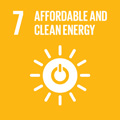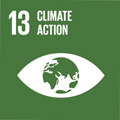- Docente: Giovanni Valenti
- Credits: 6
- SSD: CHIM/02
- Language: Italian
- Moduli: Giovanni Valenti (Modulo 1) Francesco Segatta (Modulo 2) Ivan Rivalta (Modulo 3)
- Teaching Mode: In-person learning (entirely or partially) (Modulo 1); In-person learning (entirely or partially) (Modulo 2); In-person learning (entirely or partially) (Modulo 3)
- Campus: Bologna
- Corso: First cycle degree programme (L) in Materials Science (cod. 5940)
Learning outcomes
Al termine del corso, lo studente ha acquisito le conoscenze di base della termodinamica, dell'equilibrio, della cinetica e del potenziale chimico. Utilizza la termodinamica classica nello studio dei fenomeni di trasporto. Lo studente acquisisce le competenze necessarie per comprendere i principi fisici che soggiacciono alla chimica dei materiali. L'attività laboratoriale lo introduce ai primi esempi di tecniche e modelli applicati
Course contents
Thermodynamics (with laboratory)
Introduction. Thermodynamic systems. Heat, work and internal energy. Entropy and its statistical significance. Absolute temperature.
Thermodynamic equilibrium (thermochemistry). Enthalpy, Gibbs and Helmholtz free energies. Fundamental equations. Thermal capabilities. Thermochemical.
Phase balance. Phase transitions and equilibria (one-component systems). Phase rule. Partial molar quantities, ideal and real solutions, activity. Phase transitions and equilibria (two-component systems). Phase diagrams.
Chemical reactions. Reactive mixtures: chemical equilibrium and equilibrium constants. Effect of temperature on equilibrium with exercises/pressure effect
----------------------------------------------
Kinetics (with computer lab)
Statistical thermodynamics: theoretical kinetics of gases, Boltzmann distribution.
Moving molecules: transport of an ideal gas; diffusion, diffusion coefficient; thermal conductivity; effusion; viscosity.
Empirical chemical kinetics: the definition of velocity. The kinetic laws and kinetic constants; the order of reaction; the determination of the kinetic laws.
Integration of rate equations: zero order reactions; 1st order reactions; 2nd order reactions; half-life; Arrhenius equation, dependence of reaction rate on temperature.
Reaction mechanisms: The approximation of the steady state; the kinetically determining stage; cinematographic control; unimolecular reactions.
Reactions in solution: diffusion and effusion; Control by activation and control by diffusion; Homogeneous catalysis: the Michaelis-Menten mechanism for enzymatic catalysis.
Readings/Bibliography
For all modules:
P.W Atkins, J. De Paula, J. Keeler Physical Chemistry, VI ed. it., Zanichelli (2020)
----------------------------------------------
For thermodynamics: thermodynamics lecture notes (available online on virtuale), thermodynamics tutorial lecture notes (available online on virtuale) for the video thermodynamics laboratory and quizzes available on virtuale;
----------------------------------------------
For kinetics: for the laboratory, introductory notes available on virtuale.
Teaching methods
• The lectures will be aimed at the theoretical understanding and practical use of tools for solving problems of thermodynamics and chemical kinetics.
• The lessons will be accompanied by numerical exercises, which will support the theoretical discussion, with verification of learning through self-assessment quizzes.
• Lessons will be accompanied by laboratory activities which will provide students with the opportunity to face real problems individually. An experimental thermodynamics laboratory and a computational kinetics laboratory will be planned. The experimental part of the laboratory activities will be divided into three phases: i) pre-laboratory preparation: students will be provided with educational material (videos, self-assessment quizzes and classroom lessons) before the laboratory in order to arrive prepared for the laboratory; ii) in-laboratory development: the main topics of the course will be addressed through experimentation and data processing; iii) post-laboratory evaluation: at the end of the laboratory activities, the students will process the data obtained with the support of the teacher and the results of the experiences will be discussed via power point presentation or report.
The computational part, similarly organized, will focus on the use of the computer for the modeling and numerical solution of topics/problems addressed during the lectures. During the laboratory activities the students will learn to organize the codes and the results obtained through notebooks (see, for example, the Jupyter notebooks), to be delivered to the teacher.
• In consideration of the types of activities and teaching methods adopted, attendance at the laboratory training activity requires all students of modules 1 and 2 on laboratory safety to carry out in e-learning mode [https://www.unibo.it /en/services-and-opportunities/health-and-assistance/health-and-safety/safety-and-health-in-places-of-study-and-traineeship] and participation in Module 3 of specific training on safety and health in the places of study. Information on dates and methods of attendance of Module 3 can be consulted in the appropriate section of the study course website.
Assessment methods
Thermodynamics: An oral exam aimed at the achievement by the student of an understanding of the theoretical methodologies of thermodynamics and of a practical knowledge of how to deal with thermodynamic problems. The proof is valid forever.
----------------------------------------------
Kinetics: A written test with the use of a computer, aimed at verifying the understanding of kinetic topics from a theoretical and practical point of view, by carrying out a problem similar to those faced in the computer lab.
----------------------------------------------
The final grade of the integrated course is defined as the average weighted by the number of credits of grades obtained in the two parts of the course. In the case of a grade of 30/30 in both modules and at least one honors, honors is also awarded in the overall grade. The presence, participation during the laboratory and the final discussion of the laboratory experience will also be considered in the final grade of the tests.
Teaching tools
Blackboard, projector, educational laboratories (IT and experimental), numerical exercises, video and virtual support and self-assessment quizzes (through the use of virtual or Kahoot)
Office hours
See the website of Giovanni Valenti
See the website of Francesco Segatta
See the website of Ivan Rivalta
SDGs



This teaching activity contributes to the achievement of the Sustainable Development Goals of the UN 2030 Agenda.
